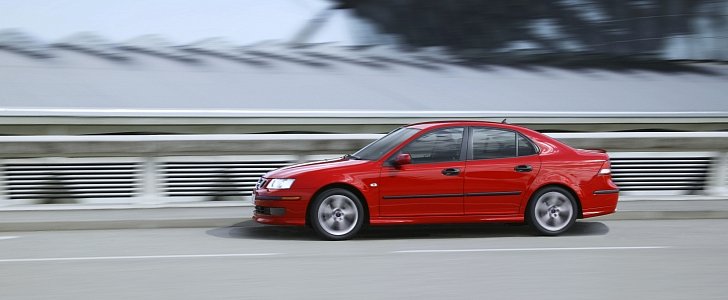Takata’s airbag inflator scandal is far from over, and it keeps unraveling disturbing information.
This time, a report in The New York Times quotes former employees of Takata’s competitors, which have disclosed that the Japanese supplier was chosen as a cost-saving measure. According to the same sources, the difference accounted for “a few dollars” per car, which can turn into billions over time if you are a giant automaker.
In the case of the story from NY Times, a former senior scientist at Autoliv named Linda Rink, who was in charge of the GM account in the late 1990s, claims that the corporation requested a price drop for airbag inflators after it had received an offer from a competitor.
Since Autoliv, a Swedish-American company, was a longtime partner of General Motors, they had been informed of a bid from Takata that proposed airbag inflators that were 30% cheaper.
At first, Autoliv was asked by GM to match the price of its competitor. Unfortunately, they could not reduce the price of their products by 30%, so they had to deny the proposition. Regardless, they requested to inspect the competitor product and provided an assessment in return.
Autoliv told General Motors that Takata’s airbag inflators contain ammonium nitrate, and that they can be dangerous because of the substance, which is “dangerously volatile.”
General Motors was not impressed about the warning from Autoliv, and went ahead with the order from Takata, even though it retained a contract with the Swedish-American supplier for other models.
When inquired by The New York Times, representatives of General Motors declined to explain discussions that “occurred two decades ago between old G.M and a supplier,” and stated that it was “not appropriate for them to comment.”
The statement came in the context of the representative of General Motors, a company that was reorganized in 2009 and broke off all ties with its predecessor with the same name.
Another former Autoliv employee stated that the corporation warned other automakers on the dangers of using ammonium nitrate inflators. Most automakers declined to comment on the topic, while others said that they could not find any relevant information from that period.
Takata was not the only supplier that had been using ammonium nitrate for its inflators. TRW had also developed an inflator that used the substance, but the supplier had devised a solution to make it safe to use over time and without influence from humidity.
In the case of TRW, engineers freeze-dried the ammonium nitrate, fitted a pressure release valve on the inflator, and applied an advanced welding solution to keep the inflators airtight. In 2006, TRW dropped their ammonium nitrate airbag inflators because they were too expensive to make.
Both Autoliv and TRW use a propellant based on “guanidinium nitrate,” which is less sensitive to temperature or moisture changes. The latter is manufactured on an industrial scale from ammonium nitrate and “dicyandiamide (calcium salt).”
In the case of the story from NY Times, a former senior scientist at Autoliv named Linda Rink, who was in charge of the GM account in the late 1990s, claims that the corporation requested a price drop for airbag inflators after it had received an offer from a competitor.
Since Autoliv, a Swedish-American company, was a longtime partner of General Motors, they had been informed of a bid from Takata that proposed airbag inflators that were 30% cheaper.
At first, Autoliv was asked by GM to match the price of its competitor. Unfortunately, they could not reduce the price of their products by 30%, so they had to deny the proposition. Regardless, they requested to inspect the competitor product and provided an assessment in return.
Autoliv told General Motors that Takata’s airbag inflators contain ammonium nitrate, and that they can be dangerous because of the substance, which is “dangerously volatile.”
General Motors was not impressed about the warning from Autoliv, and went ahead with the order from Takata, even though it retained a contract with the Swedish-American supplier for other models.
When inquired by The New York Times, representatives of General Motors declined to explain discussions that “occurred two decades ago between old G.M and a supplier,” and stated that it was “not appropriate for them to comment.”
The statement came in the context of the representative of General Motors, a company that was reorganized in 2009 and broke off all ties with its predecessor with the same name.
Another former Autoliv employee stated that the corporation warned other automakers on the dangers of using ammonium nitrate inflators. Most automakers declined to comment on the topic, while others said that they could not find any relevant information from that period.
Takata was not the only supplier that had been using ammonium nitrate for its inflators. TRW had also developed an inflator that used the substance, but the supplier had devised a solution to make it safe to use over time and without influence from humidity.
In the case of TRW, engineers freeze-dried the ammonium nitrate, fitted a pressure release valve on the inflator, and applied an advanced welding solution to keep the inflators airtight. In 2006, TRW dropped their ammonium nitrate airbag inflators because they were too expensive to make.
Both Autoliv and TRW use a propellant based on “guanidinium nitrate,” which is less sensitive to temperature or moisture changes. The latter is manufactured on an industrial scale from ammonium nitrate and “dicyandiamide (calcium salt).”



